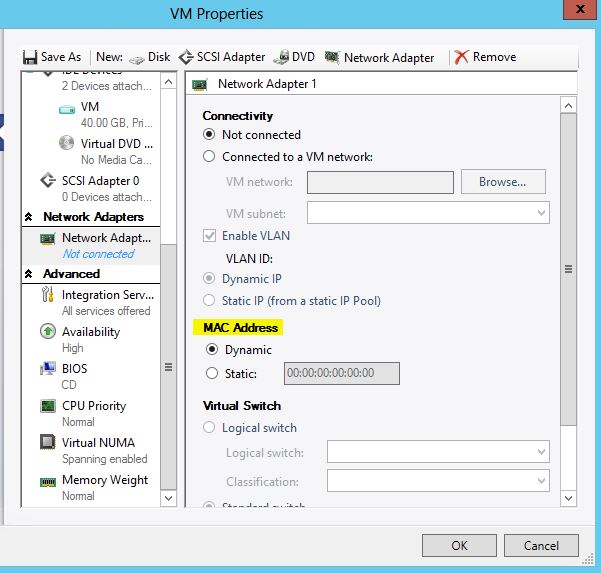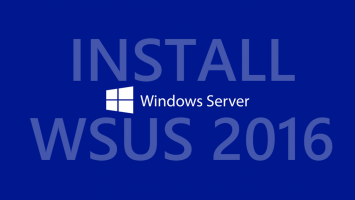This tutorial focuses on how to create a full clone of VM in Hyper-V. Basically, there are 2 ways to clone virtual machine of Hyper-V. The process to clone VM in Hyper-V works in most versions of Hyper-V running in Windows 8, Windows 8.1, Windows 10, Windows Server 2012, Windows Server 2012 R2, Windows Server 2016 or later. They include MAC address, DHCP guard, Router guard, Protected network, Port mirroring, and NIC teaming. Each feature is accompanied by a short description of how it can be used. Read them and decide which features should be enabled. Check the required boxes and click Apply to save changes. Managing Hyper-V Network Adapters with PowerShell. MAC address (Media Access Control address) is a unique identifier assigned to network interfaces for communications on the physical network segment. It usually encodes the manufacturer’s registered identification number. If you want to find the manufacturer a certain MAC address belongs to, please use our MAC address lookup tool. The adapter settings: click Advanced / Mac Address / in 'Value', enter the new Mac address consisting of 12 characters and as numeral or letter. After the change click 'OK'. After the change, execute the command 'Get-NetAdapter sort MacAddress' and the 'Team' is interfaced with the new Mac Address has been changed in step accomplished. When you assign the IP to the virtual switch, that gives the host PC running Hyper-V its IP address on your network, the 192.168.40.111 address. To assign an IP to a VM on the same subnet as the virtual switch, you need to assign the IP, the 192.168.40.101 address, directly in the VM's OS, i.e.

In most network deployments, generated MAC addresses are a good approach. However, you might need to set a static MAC address for a virtual machine adapter with unique value.
The following cases show when you might set a static MAC address:
- Virtual machine adapters on different physical hosts share the same subnet and are assigned the same MAC address, causing a conflict.
- Ensure that a virtual machine adapter always has the same MAC address.
By default, VMware uses the Organizationally Unique Identifier (OUI) 00:50:56 for manually generated addresses, but all unique manually generated addresses are supported.

11:11:11:11:11:11, 22:22:22:22:22:22 as static MAC addresses. The physical servers do not belong to the vCenter Server inventory, and vCenter Server is not able to check for address collision. You sometimes need to list and get all MAC addresses of all Hyper-V virtual machines in your network. Either for your Hyper-V administration or provisioning if you don’t set an unique MAC address automatically. Here is how to get all those MAC addresses easily with PowerShell.
How to list all MAC address of all VM’s on Hyper-V#
This tip shows you how to list MAC addresses on local or remote Hyper-V servers.

A media access control address (MAC address) of a computer is a unique identifier assigned to network interfaces for communications at the data link layer of a network segment. MAC addresses are used as a network address for most IEEE 802 network technologies, including Ethernet and WiFi. Logically, MAC addresses are used in the media access control protocol sublayer of the OSI reference model.
WikipediaA MAC address can be assigned manually by you, or automatically by Hyper-V. If you ever need to list all MAC addresses, use the Get-VM and Get-VMNetworkAdapter PowerShell cmdlets as shown in the following example:
Hyper-v Set Static Mac Address
On your local Hyper-V host, list the MAC addresses of all virtual machines (VM’s):
To list MAC addresses of all virtual machines on all Hyper-V servers, run the following code in your PowerShell console:
Or on a per remote Hyper-V server basis, run:
Hyper-v Mac Address Dynamic Or Static
More neat PowerShell Hyper-V tricks:
